My First Impressions of Sri Lanka
My first glimpses of Sri Lanka appeared through my plane window. They revealed a sea of dense green. Thick tropical forests and tea bushes rolled over gentle hills in every direction to the horizon. No cities or towns marred the beautiful unending sea of green. Not even many houses or buildings punctured the landscape. I instantly knew I was going to like Sri Lanka. It promised an abundance of nature with relatively little development.
I couldn’t help but think that the country’s nickname, ‘Pearl of the Indian Ocean’, was a huge misnomer. Sri Lanka should most definitely be called the ‘Emerald of the Indian Ocean’.
Sri Lanka sits just off the far southeastern tip of India and is inhabited primarily by people who emigrated from India long long ago, mostly from southern India. For me, Sri Lanka would be the first predominantly-Indian-influenced country I would visit. I wondered how their culture, mannerisms and daily lives would differ from those I was accustomed to in SE Asian countries.
My trip to Sri Lanka had basically been on a whim. While hanging out in Penang, Malaysia after finishing up the scuba diving season in southern Thailand, I was pondering where to travel before heading on to teach the dive season in Bali. I wanted to visit a new country (to me) that was inexpensive and not too far, considering I had only one month to travel.
Another long-term traveler staying at my hotel mentioned that he’d just been to Sri Lanka. He’d had a wonderful time and highly recommended it. He told me the costs for food, guest houses and transportation. He suggested several places to visit: lush tea plantations, a strenuous mountain pilgrimage trek, a charming historic Dutch fort town and wonderful long, quiet relaxing beaches on Sri Lanka’s south coast. That certainly sounded enticing.
I did more research online and in the local bookstore. Flights on Air Asia between Malaysia and Sri Lanka were incredibly cheap. I could fly round-trip for about $200 US. Prices for guest houses, food and other daily costs seemed to be within my budget.
Even better, it was a perfect time to visit in many regards. May was off season, which meant few tourists and lower prices. In the bigger picture, Sri Lanka’s 33-year-long civil war had recently ended, making the country suddenly much safer and less stressful to visit. How could I pass up this opportunity that fell in my lap at the perfect moment?
I booked my flight, bought a guidebook, planned which places I most wanted to visit, and quickly prepared to head off to a brand new country. Within one week I was on my way to Sri Lanka!
My flight crossed the entire country from east to west in about 30 minutes, en route from Kuala Lumpur, Malaysia to Sri Lanka’s capital, Colombo. That proved definitively how small the island nation is. The USA, in contrast, takes over three hours to fly across from east to west coasts.
We reached Sri Lanka’s west coast, which was lined by a long, long stretch of beach backed by coconut palms and small villages with wooden houses. We swept out over the deep blue Indian Ocean briefly then doubled back to touch down at Colombo Airport, some 20 km north of the city.
After getting my visa on entry, exchanging some money and grabbing a bite to eat. I caught a 2-hour bus to Kandy, the ancient capital of Sri Lanka, located in the foothills of the country’s famous tea plantation hills. Sri Lanka was formerly known as Ceylon and is the origin of famous Ceylon teas known all over the world, including internationally famous Lipton’s Tea. I could hardly wait to visit some plantations and factories.
During my first week in Sri Lanka many cultural habits and customs of Sri Lankan daily life popped out at me, things that were strikingly different from the SE Asian countries I was familiar with. Most notably:
Sri Lankans walk!
That might not seem like much of a revelation. But it was indeed. I’d been immersed in SE Asia for most of 12 years, where I rarely see people walk. SE Asians much prefer motorbikes, cars, buses, vans, trains, city rail – anything to avoid walking in the heat. In 12 years of travels I could only remember seeing people walk regularly in Myanmar and remote areas of Laos and Nepal.
Suddenly watching an entire population using their own legs to get around was quite astonishing.
Restaurants close daily between about 2 and 6 pm.
As it turned out, that posed a huge problem for me. In fact, I ended up getting sick because of it. I simply couldn’t find food when I needed it. (Quite unfortunately for me, if I don’t eat regularly I get quite sick.) Once I got ill in Sri Lanka, I had trouble recovering because I couldn’t find enough food to nourish myself in order to recover. Simply put, trying to eat on a budget in that country was a mess.
Sri Lanka’s towns and cities are mostly grubby, untidy, uninteresting places.
Sri Lanka’s natural places are beautiful. The hill country, tea plantations, rolling mountains, forests and beaches are all gorgeous. But the towns have much to be desired. Even Kandy, one of Sri Lanka’s most famous and popular towns, really has little of interest.
Galle is the one exception. It’s an immensely charming historic Dutch fort town surrounded by a stone wall. It features a lovely lighthouse, a wide promenade along the fort wall and narrow streets full of restored buildings that have been converted into boutiques, hotels, cafes, galleries and restaurants. It was one of my favorite places in the country.
Aside from Galle, I recommend visiting Sri Lanka for its nature, not for its towns or cities.
In total, I spent one month of holidays in Sri Lanka. That didn’t allow nearly enough time to see all of Sri Lanka’s best destinations and attractions. So for that trip I confined myself to the southern half of the island with leisurely travel through the highlands, along the south/southwest coast and a short visit to Colombo. My route included Kandy, Adam’s Peak, Nuwara Eliya, Haputale, Ohiya, Ella, Mirissa, Galle, Colombo and Negombo Beach.
Of all the places I visited and activities I enjoyed, the following were my 10 favorites. I’ll be writing in more detail about each of these soon, so stay tuned:
* Kandy Lake’s swarming birds and bats
* Visiting tea plantations & factories. (I visited 4 in total.)
* Riding the colonial British railway through the hihglands
* Climbing Adam’s Peak, a pilgrimage trek for locals
* Relaxing in a quirky D.I.Y. ‘herbal spa’ at the base of Adam’s Peak
* Visiting several colonial British hotels in Nuwara Eliya and Colombo
* Taking a British high tea at a colonial hotel in Nuwara Eliya
* Walking in a forest near Ohiya train station
* Galle – Dutch fort town
* Sri Lanka’s dramatic and beautiful stormy coast (in May)
* Mirissa and Bentota Beaches
QUESTIONS:
Have you ever visited Sri Lanka?
If so, what were your impressions?
If not, what would you like to see & do on a trip to Sri Lanka?
———————————————————————————————————————————
You might also like:
10 Free Things to do in Sri Lanka
Photo Gallery: Galle, Sri Lanka
Photo Gallery: Tea and Trains in Sri Lanka
———————————————————————————————————————————-

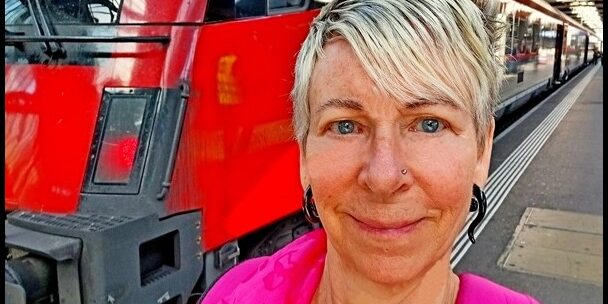





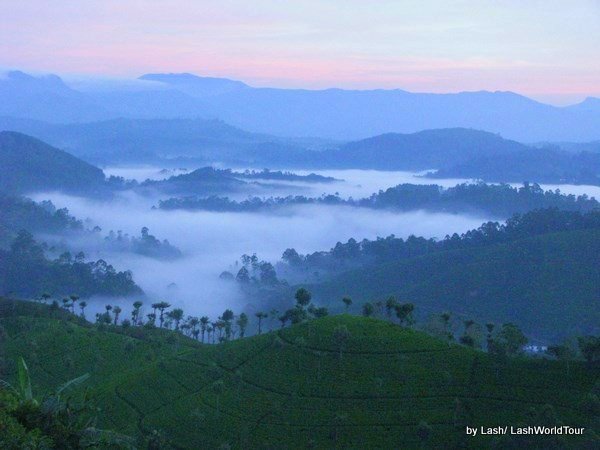
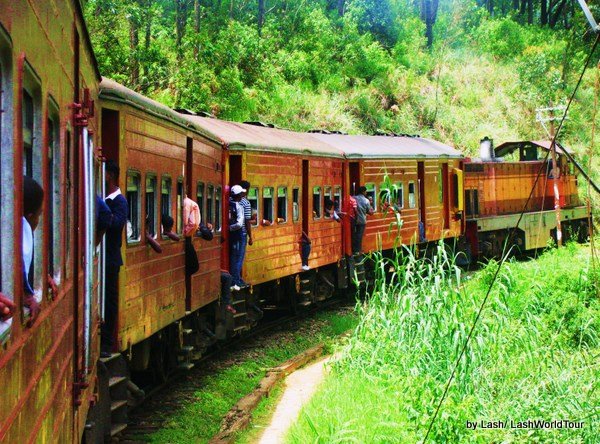
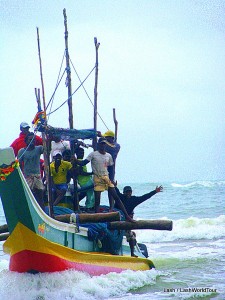
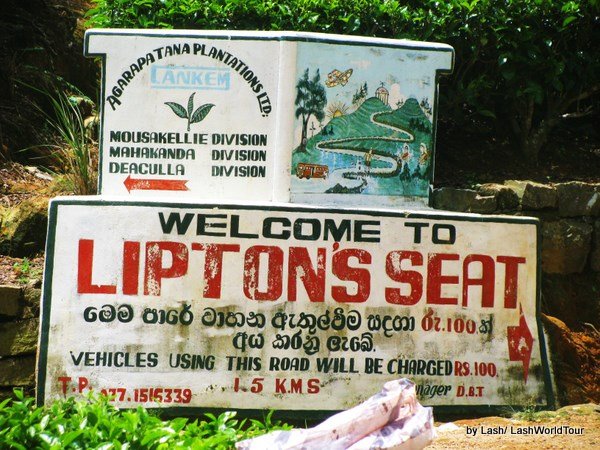
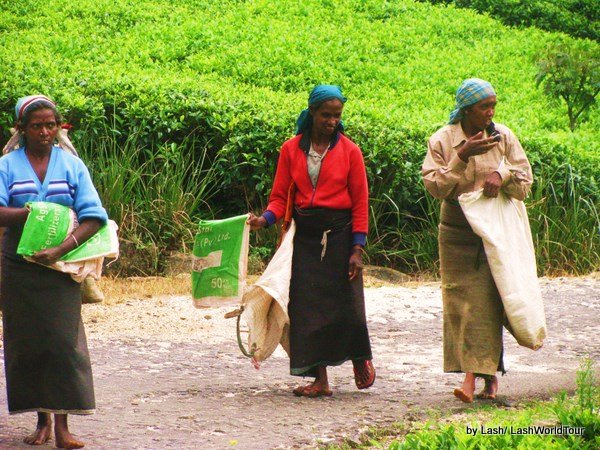

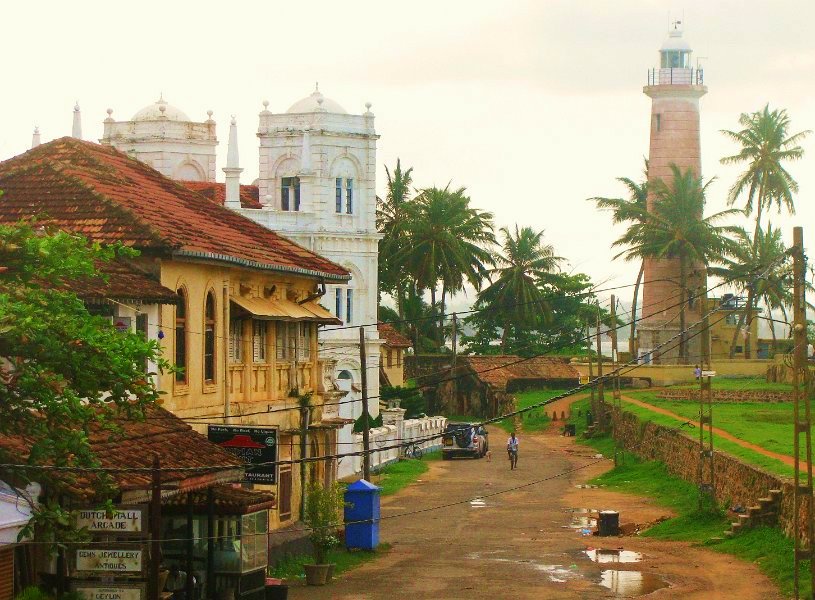
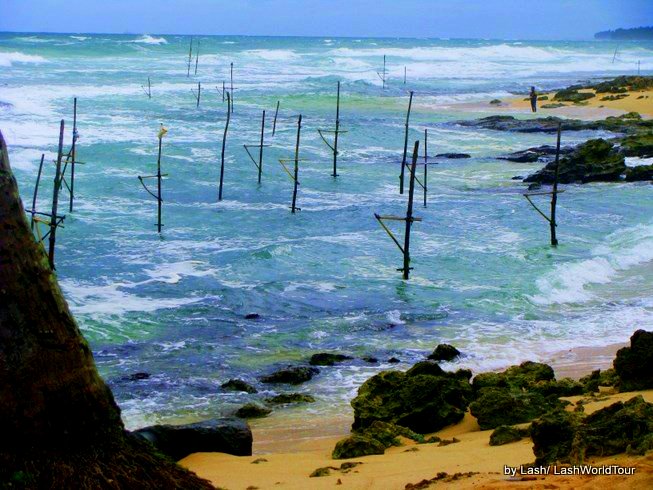

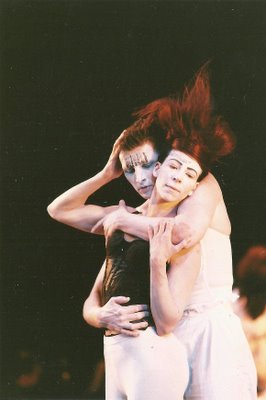




 Hi! I'm Lash, an American nomadic world traveler who's been traveling solo since 1998. I’m passionate about traveling the world nomadically and then sharing it all with you. I hope to inspire you to travel the world, to entertain you with tales from the road, and to help you reach your travel dreams. Welcome!
Hi! I'm Lash, an American nomadic world traveler who's been traveling solo since 1998. I’m passionate about traveling the world nomadically and then sharing it all with you. I hope to inspire you to travel the world, to entertain you with tales from the road, and to help you reach your travel dreams. Welcome! 



